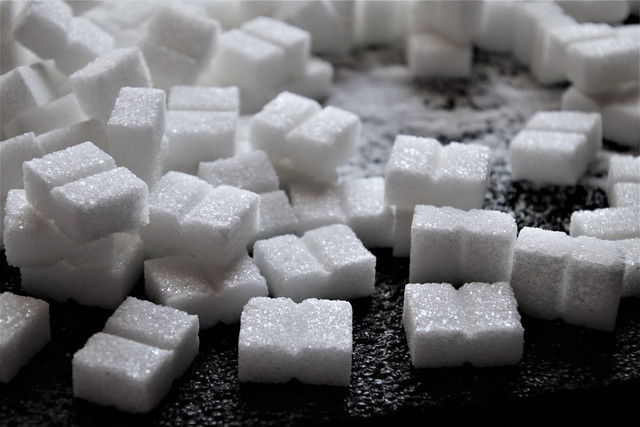Empty calories is a term that is often thrown around, but what does it actually mean? Learn why there is more behind this expression than meets the eye.
The idea of empty calories has been around for quite some time, despite many thinking it is a relatively new term. But what are they?
Empty-calorie foods are those made up mostly of sugars, fats, and oils. Early research into these types of foods dates back all the way to 1816, with scientists such as François Magendie demonstrating their effects. However, can calories ever really be “empty”? Below, we take a deeper look at what this expression means.
Why Empty Calories Are Still Calories

(Foto: CC0 / Pixabay / Jacob-Medien)
First things first: empty calories are not actually empty. The term refers to foods that have little or no nutritional value — in other words, foods that contain calories, but don’t provide vitamins, minerals, protein, or any of the other building blocks of life. Some high-sugar empty-calorie foods will provide small bursts of energy due to the amount of sugar that they contain. This is why the term has picked up negative associations over time.
However, despite being “empty”, these foods still contain calories. For example, an “empty calorie” cupcake may have around 200 calories. The problem is that a cupcake does not contain any of the aforementioned nutrients. So while you are still getting a portion of your daily calorie intake, the nutritional value provided is low.
Based on this information, we can argue that empty-calorie foods don’t really exist, as they still contain calories — they just aren’t good for you. Most of these foods can be happily enjoyed in moderation in a healthy diet.
So what are some examples of empty-calorie foods, and are there any “fuller calorie” alternatives? Lets take a look.
Examples of Empty Calorie Foods



(Foto: CC0 / Pixabay / Pexels)
Let’s take a look at some typical empty-calorie foods. Here are some common examples:
- Cakes and donuts
- Cookies
- Sports and energy drinks
- Fries and potato chips
- Ice cream and milkshakes
- Fast foods
- Alcohol (there are plenty of benefits of not drinking alcohol)
- Candy
While the list of foods with empty calories is much longer than this, these are clear examples of foods that offer little to no nutritional value. Many of these foods are high in saturated fats and added sugar, which have been found to increase the risk of developing conditions like high cholesterol and diabetes.
Good Alternatives to Empty-Calorie Foods



(Foto: CC0 / Pixabay / silviarita)
What are some alternatives to empty-calorie foods? Here are some easy swaps:
- Go for soda alternatives instead of sugary drinks.
- Swap sugary cereals for homemade puffed rice or healthy granola.
- Try going vegan to incorporate more whole foods into your diet.
- White bread is bad for you — try wholegrain or homemade buckwheat bread instead.
- Skip the packaged snacks and make some homemade trail snacks you can enjoy while exercising, at work, or at home.
- Make your own post-workout smoothies instead of buying them in a cafe.
These foods have a higher nutritional value compared to empty-calorie foods, and often contain less sugar and ‘unhealthy’ fats. For example, fruits contain natural sugars, instead of processed sugar. By opting to make more recipes from scratch, you can ensure that you know exactly what’s going into your meals.
Sugar and Empty Calories



(Foto: CC0 / Pixabay / pasja1000)
Sugar is found in many empty-calorie foods — often in large quantities. That’s because sugar is frequently added to processed snacks and desserts during the production process. Consuming sugar that has been added during processing affects your blood glucose level differently than if you were to consume naturally-occurring sugars, such as those found in fruit. This could potentially put you at higher risk for conditions such as diabetes. Of course, there is nothing wrong with treating yourself — the key is doing things in moderation.
While sugar is fine in moderation, too much of it can pose a risk to your health. One healthier sugar alternative is fruit. Fruits naturally contain glucose and fructose, which are types of sugar. However, fruits also contain essential vitamins and minerals, so they have value beyond just being a sweet treat. The sugars are also digested at a slower rate and help to keep your metabolism stable.
In addition to concerns around sugar and health, there are also concerns about the sustainability of sugar. For starters, the production of sugar can lead to deforestation, as large areas of land are needed to cultivate the crop. By cutting down trees that absorb carbon emissions, the sugar industry contributes to global warming. Furthermore, the use of chemicals during sugar production threaten wildlife and biodiversity.
If you want to reduce your intake of empty calories and eat foods with more nutritional value, start by checking labels, trying out more homemade meals, and eating whole foods. There’s no such thing as an “empty” calorie, but you can always be more conscious of what you are consuming.
Read more:
- Is Honey Healthier Than Sugar?
- 11 Cane and Beet Sugar Substitutes
- Is Sugar Alcohol Bad For You? Here’s What You Need to Know
Do you like this post?






